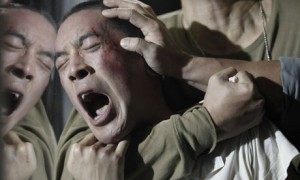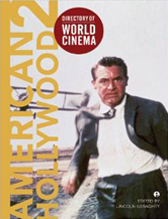
REVIEW: Revenge: A Love Story
While revenge narratives are common within cinema, few films seek to explore the ideological complexities surrounding retributive violence. Typically, when vengeance is meted out on-screen, the actions are framed as either justifiable or necessary. Wong Ching Po’s Revenge: A Love Story has the pretense of a film that is attempting to engage the ethics of reprisal while enacting a morally contentious tale.
Opening with a series of crime scenes involving the mutilated bodies of pregnant women and the strangulated and drowned corpses of two police officers, Revenge: A Love Story initially appears as a serial killer film with a difference: the identity of the murderer, Chan Kit (Juno Mak), is evident from the outset and before long he’s taken in custody.
 What follows is a back-story involving Kit and a young woman, Cheung Wing (Aoi Sola), with whom he’s become romantically involved, and an incident involving corrupt police officers that culminates in an horrific rape sequence. The retrospective structuring of the narrative is clearly intended to inflect the audience’s perception of Kit’s vengeance, provoking an understanding of the motivations for the violence that opened the film. But where Po errs is in the contrasting manner in which those events are presented.
What follows is a back-story involving Kit and a young woman, Cheung Wing (Aoi Sola), with whom he’s become romantically involved, and an incident involving corrupt police officers that culminates in an horrific rape sequence. The retrospective structuring of the narrative is clearly intended to inflect the audience’s perception of Kit’s vengeance, provoking an understanding of the motivations for the violence that opened the film. But where Po errs is in the contrasting manner in which those events are presented.
While the actual murders of the pregnant women are never shown (an absence that grants the crimes an almost tacit vindication in the context of what follows), Revenge: A Love Story details the rape scene with a disturbingly voyeuristic sensibility; moving between slow-motion shots of the assault to close ups of Wing’s submissive naked body. Equally problematic is the fact that the audience’s point of identification throughout the rape remains with Kit who is forced to watch the ordeal from an adjoining room. In doing so, the film implies that the real trauma requiring vengeance is less the rape than the experience of having witnessed the crime.
Unlike traditional rape-revenge films such as I Spit on Your Grave (1978) in which a female protagonist gains retribution over her male assailants, Revenge: A Love Story  regards Wing with utter indifference. For instance, a scene in which Wing performs an abortion on herself with a kitchen knife is devoid of empathy or identification, reduced to a mere plot point facilitating Kit’s release from prison. As disembowelled corpses or brutalised victims, women in Revenge are either objects that motivate, or are violated by, male violence. If the film isn’t entirely dismissive about its own misogyny, it veers perilously close.
regards Wing with utter indifference. For instance, a scene in which Wing performs an abortion on herself with a kitchen knife is devoid of empathy or identification, reduced to a mere plot point facilitating Kit’s release from prison. As disembowelled corpses or brutalised victims, women in Revenge are either objects that motivate, or are violated by, male violence. If the film isn’t entirely dismissive about its own misogyny, it veers perilously close.
The concluding scenes only further distance the film from any substantiative engagement with the morality or obsessive nature of revenge. Having extricated Wing from the narrative, Revenge: A Love Story reverts to hyper-stylised action set pieces involving slow motion choreography and fiery shootouts, interspersed by muddling biblical-themed chapter titles (eg. ‘Before the blood flows do not believe the giver of eternal life’). That Wong Ching Po chooses to end his uncritical ode to male violence with an incongruous quote from Josh Billings (“There is no revenge so complete as forgiveness”), is ultimately reflective of the film as a whole: a thoughtless and exploitative mess.





RSS feed for comments on this post. TrackBack URI